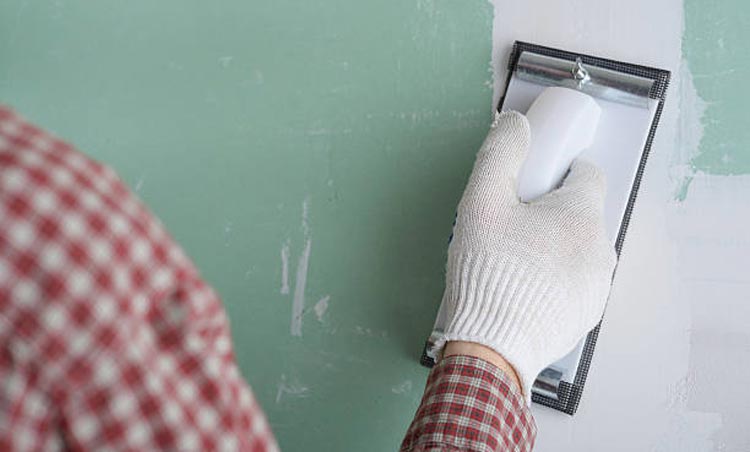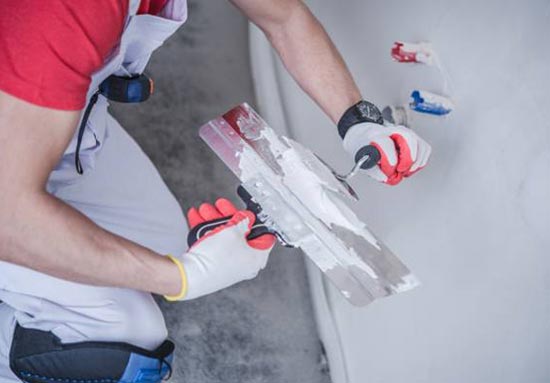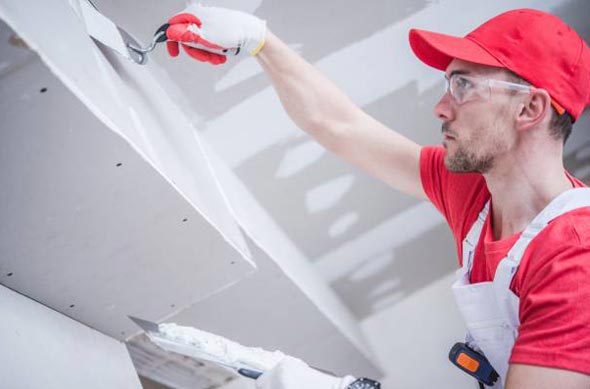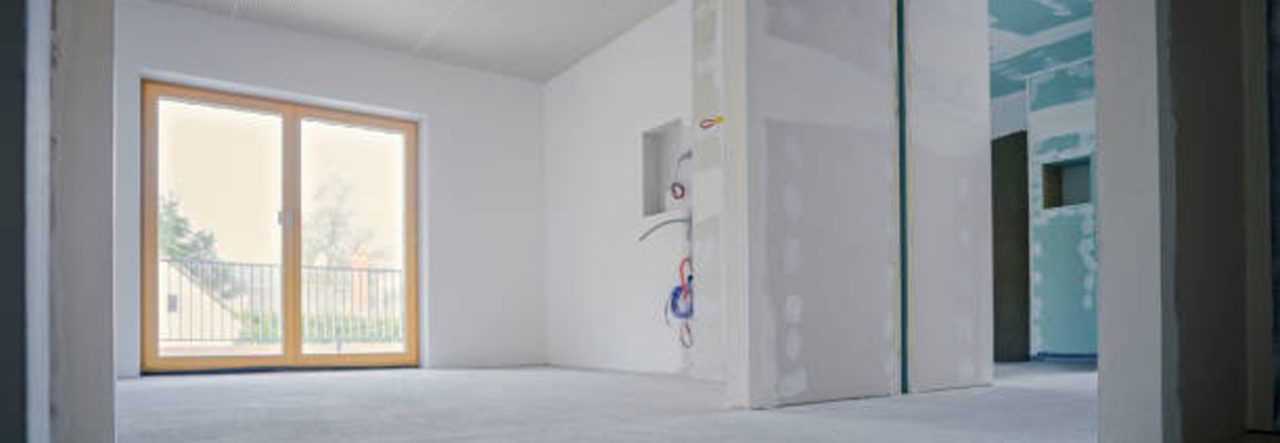
Are you dry walling and wondering if sanding between coats of drywall mud is necessary?
Whether a DIY enthusiast or a professional contractor, getting the perfect finish on your walls is essential. The good news is that drywall mud sanding can help you achieve this goal.
Sanding ensures that the mud dries evenly and provides a smooth surface for painting, so it’s an essential step in any dry walling project. In this article, we’ll discuss why sanding drywall mud between coats is essential and how to do it correctly.
Explain Why Sanding Is Essential For A Perfect Finish on Walls

When applying drywall mud, sanding between coats is crucial in achieving a smooth, finished surface. Without sanding, the coats of mud are likely to remain rough and uneven, leaving visible lines or bumps.
Sanding eliminates these imperfections by smoothing the edges between each coat, creating a seamless look with no visible lines. It also helps fill in any holes or gaps between coats that could be exposed after painting.
Additionally, sanding helps to remove any dust or debris that may have become embedded in the mud during application. This ensures thorough and even paint coverage when applied over the finished surface.
After applying drywall mud, sanding is important to get a smooth surface on walls and ceilings.
Describe the Process of Sanding Between Coats of Drywall Mud

Sanding drywall mud is an essential step in the dry walling process. It helps ensure that subsequent coats are correctly applied and that the surface is smooth and even. Here we’ll discuss drywall mud sanding in detail.
Preparing to Sand:
Once the desired amount of drywall mud has been applied, it’s time to prepare for sanding. This includes gathering all necessary supplies, such as sandpaper or sander, and protective gear like goggles and a dust mask to protect against particles created during the sanding process.
It’s also important to note that sandpaper should be used appropriately for each job; a coarse grit is best for heavier jobs, while finer grits are better suited for lighter jobs like smoothing out small imperfections.
Types of Sanders:
Two types of sanders are commonly used when sanding drywall mud orbital and vibrating.
The orbital sander is best for more extensive jobs due to its ability to quickly remove material from surfaces with its back-and-forth oscillating motion; however, it can leave more marks than a vibrating sander due to its larger size and contact area with the surface being worked on.
Vibrating sanders, on the other hand, are smaller than their orbital counterparts and can provide a much smoother finish without leaving any visible marks or swirls behind. They’re great for finishing up minor details after using an orbital sander.
Sandpaper Grits:
While selecting a type of sander is essential when prepping to sand drywall mud between coats, choosing the correct grit of paper can be just as crucial when achieving the desired result.
Coarse grits such as 40-60 are ideal for heavy-duty jobs, 80-100 grits will work well for medium-duty applications, and 120-180 grits are great for delicate finishing touches before painting or wallpapering over them.
Additionally, some people prefer to use very fine 220+ grit papers if they need a perfectly smooth finish with no visible blemishes or flaws left behind by coarser grades when painting or wallpapering.
Sanding Techniques:
To get optimal results from your chosen type and grade of paper, you should employ several techniques when sanding between coats of drywall mud.
Always move in straight lines rather than circular patterns while simultaneously applying light pressure on your tool; this will help ensure an even finish without causing any unsightly grooves or ridges in your finished product.
Additionally, keep your tool moving at all times instead of staying in one spot since this can lead to uneven textures across various areas due to irregular amounts being removed from each spot you focus on too long which can result in an inconsistent look overall once complete.
Cleaning Up:
Once you’ve finished sanding between coats of drywall mud, you must clean up thoroughly, so all dust particles created by the process don’t settle into other areas, such as floors or furniture nearby.
Vacuuming is usually sufficient but mopping may be needed depending on how large an area was covered during the project itself.
Be sure not to forget about all protective gear donned before starting dispose of disposable ones immediately after taking them off and wash reusable items before storing them away correctly. Hence, they’re ready next time you need them.
Conclusion
Between coats of drywall mud, sanding is an essential part of completing any project related to this material; it ensures that subsequent layers adhere properly and provides a smooth finish with minimal visible flaws upon completion before adding any decorative elements like paint or wallpaper over the top off.
Preparing correctly by ensuring that all supplies are gathered beforehand, selecting appropriate types and grades of paper, and utilizing proper techniques while executing the task itself will help ensure ideal results every time.
Finally, always remember that cleanup after projects involving dusty materials like these should never be overlooked removing dust particles from hard surfaces nearby will make everything look much better afterward.
